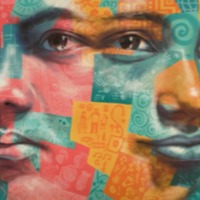
Seif
There is an estimated 48,000 people living in modern slavery in Libya (GSI 2018). Libya is a major transit destination for migrants and refugees hoping to reach Europe by sea. Human trafficking networks have prospered amid lawlessness, created by the warring militias that have been fighting for control of territories since the toppling of Muammar Gaddafi in 2011. Highly organized trafficking and migrants smuggling networks that reach into Libya from Niger, Nigeria, Chad, Eritrea, Ethiopia, Somalia, Sudan, and other sub-Saharan states subject migrants to forced labor and forced prostitution through fraudulent recruitment, confiscation of identity and travel documents, withholding or non-payment of wages, debt bondage, and verbal, physical, and sexual abuse. In some cases, migrants reportedly pay smuggling fees to reach Tripoli, but once they cross the Libyan border they are sometimes abandoned in southern cities or the desert where they are susceptible to severe forms of abuse and human trafficking. Seif was a student in Sudan when he and some friends decided to travel to Europe. They arranged the journey with a smuggler and left for Libya through Chad. The desert was a tough experience, there was little to eat and drink, and when they arrived in Libya, they were exhausted. There, they were kidnapped and forced to work without pay in the goldmines close to the border.
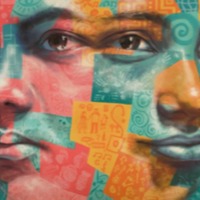
Vanessa
There is an estimated 48,000 people living in modern slavery in Libya (GSI 2018). Libya is a major transit destination for migrants and refugees hoping to reach Europe by sea. Human trafficking networks have prospered amid lawlessness, created by the warring militias that have been fighting for control of territories since the toppling of Muammar Gaddafi in 2011. Highly organized trafficking and migrants smuggling networks that reach into Libya from Niger, Nigeria, Chad, Eritrea, Ethiopia, Somalia, Sudan, and other sub-Saharan states subject migrants to forced labor and forced prostitution through fraudulent recruitment, confiscation of identity and travel documents, withholding or non-payment of wages, debt bondage, and verbal, physical, and sexual abuse. In some cases, migrants reportedly pay smuggling fees to reach Tripoli, but once they cross the Libyan border they are sometimes abandoned in southern cities or the desert where they are susceptible to severe forms of abuse and human trafficking. In Nigeria, Vanessa struggled to house and feed herself and her three children after being thrown out of their home by her abusive husband. She worked as a hawker, selling fruit, and as a hairdresser, but worried constantly about money. Then a friend mentioned a sister in Italy with a hairdressing salon and recommended Vanessa to work there. She was told it would be an easy journey through Libya, however after arriving in Tripoli, Vanessa and her fellow travellers were housed in a smuggler’s compound when a fight broke out among neighbourhood gangs. During this time, her baby developed a fever and became critically ill, dying shortly afterward. She set off from Tripoli on a smuggler’s boat headed for Italy, but the boat was captured by bandits who took them back to Libya and held the passengers for ransom. Vanessa’s friend's sister in Italy paid for her release, but she was unable to make it to Italy. When she tried for a second time, she was caught by the Libyan Coast Guard, brought back, and imprisoned. A Ghanaian man bailed her out of prison only to sell her to a brothel where she had to work as a prostitute to pay off her debt.
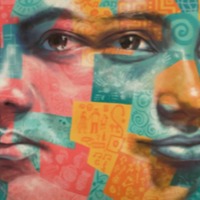
Yasmiin
There is an estimated 48,000 people living in modern slavery in Libya (GSI 2018). Libya is a major transit destination for migrants and refugees hoping to reach Europe by sea. Human trafficking networks have prospered amid lawlessness, created by the warring militias that have been fighting for control of territories since the toppling of Muammar Gaddafi in 2011. Highly organized trafficking and migrants smuggling networks that reach into Libya from Niger, Nigeria, Chad, Eritrea, Ethiopia, Somalia, Sudan, and other sub-Saharan states subject migrants to forced labor and forced prostitution through fraudulent recruitment, confiscation of identity and travel documents, withholding or non-payment of wages, debt bondage, and verbal, physical, and sexual abuse. In some cases, migrants reportedly pay smuggling fees to reach Tripoli, but once they cross the Libyan border they are sometimes abandoned in southern cities or the desert where they are susceptible to severe forms of abuse and human trafficking. Yasmiin had a small restaurant in her home town in Somalia. One day she was kidnapped by some men and raped. After that she became ostracised in her community, people stopped talking to her and stopped coming to her restaurant. She could not stay there any longer and decided to leave Somalia, taking the smuggler route through Yemen and Sudan to Libya, hoping to reach Europe. She was imprisoned in Libya and eventually evacuated by UNHCR to Niger where she is waiting for re-settlement.
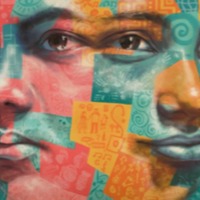
Caroline
There is an estimated 48,000 people living in modern slavery in Libya (GSI 2018). Libya is a major transit destination for migrants and refugees hoping to reach Europe by sea. Human trafficking networks have prospered amid lawlessness, created by the warring militias that have been fighting for control of territories since the toppling of Muammar Gaddafi in 2011. Highly organized trafficking and migrants smuggling networks that reach into Libya from Niger, Nigeria, Chad, Eritrea, Ethiopia, Somalia, Sudan, and other sub-Saharan states subject migrants to forced labor and forced prostitution through fraudulent recruitment, confiscation of identity and travel documents, withholding or non-payment of wages, debt bondage, and verbal, physical, and sexual abuse. In some cases, migrants reportedly pay smuggling fees to reach Tripoli, but once they cross the Libyan border they are sometimes abandoned in southern cities or the desert where they are susceptible to severe forms of abuse and human trafficking. Caroline thought she was travelling to Europe with her boyfriend, but he sold her to a woman who took her to Libya and sold her on again to another man. She was taken to Tripoli and forced into prostitution. After Caroline escaped prostitution, she went to live in a residential house. But this house was raided and she was put in a prison where she was subjected to physical and sexual abuse daily. She was finally able to escape the prison by jumping a fence and found herself at a place where people were getting on a boat to Italy. She joined them, but the journey was not easy.
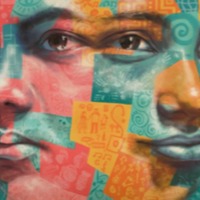
Amanthi K.
There are an estimated 61,000 people living in modern slavery in Saudi Arabia (GSI 2018). It is a source and destination country for men and women trafficked from South and South East Asia and Africa. People voluntarily migrate to the country to work in a variety of sectors including construction and domestic service; many of these workers are vulnerable to forced labour. Traffickers and brokers often illegally recruit migrants to work in Saudi Arabia and subsequently forced them into domestic servitude or debt bondage. Female domestic workers are particularly at risk of trafficking due to their isolation inside private residences. Non-payment or late payment of wages remains a complaint from foreign workers, while employer's withholding of worker's passports remains a significant problem. Trafficking perpetrators include businesses of all sizes, private families, recruitment companies in both Saudi Arabia and labor-sending countries, and organized criminal elements.Amanthi K. travelled to Saudi Arabia for work where she was trapped in domestic servitude. She became pregnant after her employer raped her and was sentenced to nine months in prison for adultery in 2006. Amanthi K. reported that there was an interpreter between Arabic and Sinhala, but that she had no lawyer. The Saudi authorities did not provide her with an opportunity to notify the Sri Lankan mission about her case and she had no contact or assistance from them during her ordeal.
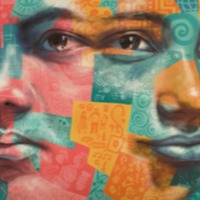
C.
There are an estimated 145,000 people living in conditions of modern slavery in Italy (GSI 2018). Italy is a destination, transit, and source country for women, children, and men subjected to sex trafficking and forced labour. Victims originate from Nigeria, Romania, Morocco, China, and other countries. Female victims are often subjected to sex trafficking in Italy after accepting promises of employment as dancers, singers, models, restaurant servers, or caregivers. Romanian and Albanian criminal groups force Eastern European women and girls into commercial sex. C was raped by her father when she was thirteen years old. She left her abusive home life to live with her sister, where she met a boy and fell in love. When she tried to tell her father he did not accept it and she travelled to Italy illegally with another boy, however they were stopped by the police and she was taken to a centre run by nuns. After a while she returned to Albania where she again met the boy she had fallen in love with, however her father killed him, and she was arrested. After leaving prison C was smuggled to Italy where she was forced into prostitution until she was stopped by the police and deported back to Albania.
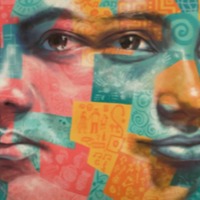
Cyntoia Brown-Long
There are an estimated 403,000 people living in modern slavery in the United States (GSI 2018). Sex trafficking exists throughout the country. Traffickers use violence, threats, lies, debt bondage and other forms of coercion to compel adults and children to engage in commercial sex acts against their will. The situations that sex trafficking victims face vary, many victims become romantically involved with someone who then forces them into prostitution. Others are lured with false promises of a job, and some are forced to sell sex by members of their own families. Victims of sex trafficking include both foreign nationals and US citizens, with women making up the majority of those trafficked for the purposes of commercial sexual exploitation. In 2015, the most reported venues/industries for sex trafficking included commercial-front brothels, hotel/motel-based trafficking, online advertisements with unknown locations, residential brothels, and street-based sex trafficking. Cyntoia Brown Long was 16 years old when she was sentenced to life in prison for the murder of a man who had bought her for sex. Cyntoia had run away from home and met a 24-year-old man who went by the name ‘Kut Throat’. She thought he was her boyfriend and was living with him in motels around Nashville, doing cocaine every day. However, ‘Kut Throat’ trafficked Cyntoia into forced prostitution. If she did not come back with cash, he would beat and rape her. One night in August 2004, Cyntoia was picked up at a fast-food restaurant by a man who agreed to pay her $150 for sex. After arriving at his house, he began showing her his gun collection, making her fear for her life. She later shot him in self-defence. Here she talks about learning that she had been trafficked and being granted clemency.
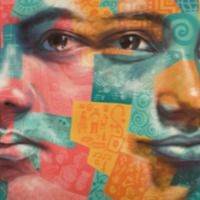
Luiza
There are an estimated 24,000 people living in modern slavery in Kyrgyzstan (GSI 2018). The country remains a source, transit and destination country for men, women and children subjected to forced labour and sex trafficking. Women from across the former Soviet Republic often travel to neighbouring countries with the promise of jobs as nannies, domestic workers, work in hotels and in the catering and entertainment sectors. However, upon arrival they find themselves sold to a pimp and forced in to sex work to pay off debt incurred for transportation, accommodation and the opportunity. Originally from Tashkent, Uzbekistan, Luiza Karimova* left her son with her family and travelled to Osh, Kyrgyzstan to find work. In Kyrgyzstan, she was sold into sex slavery and trafficked into Dubai. After 18 months, she was arrested and sent to jail. Today, Karimova works with Podruga, an organization based in Osh, Kyrgyzstan, which is supported by UN Women. Podruga works to end violence against women and assists women subjected to sex and drug trafficking.
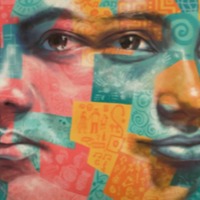
Elias
There are an estimated 451,000 people living in modern slavery in Eritrea (GSI 2018). The small country has a unique system of compulsory, open-ended military service for citizens that makes it one of the most oppressive states in the world. The government has enforced its current policy of sending all secondary school students to serve for a minimum of twelve months since 2003. While Eritrean law puts the minimum conscription age at 18, many teenagers find themselves recruited during high school at age 16 or even younger. In rural areas, where formal education is rarer, the army will visit villages to round up young girls and boys who look roughly of age, to begin their program of combat training and forced labour. Elias was 15 years old when he was imprisoned for attempting to flee Eritrea. He was then sent to a military training camp where he tells of the starvation and beatings he and other children endured. Elias was finally able to escape and leave the country.
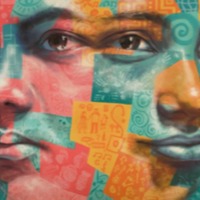
Binyam
There are an estimated 451,000 people living in modern slavery in Eritrea (GSI 2018). The small country has a unique system of compulsory, open-ended military service for citizens that makes it one of the most oppressive states in the world. The government has enforced its current policy of sending all secondary school students to serve for a minimum of twelve months since 2003. While Eritrean law puts the minimum conscription age at 18, many teenagers find themselves recruited during high school at age 16 or even younger. In rural areas, where formal education is rarer, the army will visit villages to round up young girls and boys who look roughly of age, to begin their program of combat training and forced labour. Binyam was 17 years old when he was imprisoned for planning to flee Eritrea.
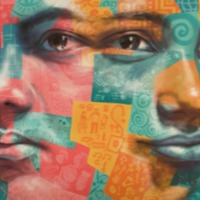
Suliman
There are an estimated 451,000 people living in modern slavery in Eritrea (GSI 2018). The small country has a unique system of compulsory, open-ended military service for citizens that makes it one of the most oppressive states in the world. The government has enforced its current policy of sending all secondary school students to serve for a minimum of twelve months since 2003. While Eritrean law puts the minimum conscription age at 18, many teenagers find themselves recruited during high school at age 16 or even younger. In rural areas, where formal education is rarer, the army will visit villages to round up young girls and boys who look roughly of age, to begin their program of combat training and forced labour. Suliman was 15 when he was caught trying to flee Eritrea and imprisoned. He was subjected to interrogation and torture before he was released and able to leave the country.
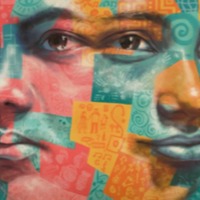
Segen
There are an estimated 451,000 people living in modern slavery in Eritrea (GSI 2018). The small country has a unique system of compulsory, open-ended military service for citizens that makes it one of the most oppressive states in the world. The government has enforced its current policy of sending all secondary school students to serve for a minimum of twelve months since 2003. While Eritrean law puts the minimum conscription age at 18, many teenagers find themselves recruited during high school at age 16 or even younger. In rural areas, where formal education is rarer, the army will visit villages to round up young girls and boys who look roughly of age, to begin their program of combat training and forced labour. Segen was 14 years old when she tried to flee Eritrea. However she was caught and imprisoned. In prison she was subjected to unhygienic conditions, and physical abuse.
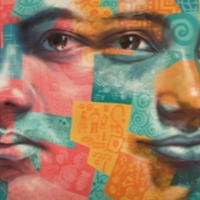
Heyab
There are an estimated 451,000 people living in modern slavery in Eritrea (GSI 2018). The small country has a unique system of compulsory, open-ended military service for citizens that makes it one of the most oppressive states in the world. The government has enforced its current policy of sending all secondary school students to serve for a minimum of twelve months since 2003. While Eritrean law puts the minimum conscription age at 18, many teenagers find themselves recruited during high school at age 16 or even younger. In rural areas, where formal education is rarer, the army will visit villages to round up young girls and boys who look roughly of age, to begin their program of combat training and forced labour. Heyab was caught trying to flee the country in 2009 when she was 16 years old and imprisoned for eight months. While in prison she was subjected to physical abuse and beatings.
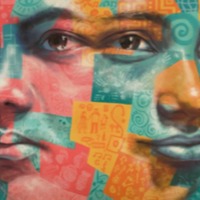
Dawit B
There are an estimated 451,000 people living in modern slavery in Eritrea (GSI 2018). The small country has a unique system of compulsory, open-ended military service for citizens that makes it one of the most oppressive states in the world. The government has enforced its current policy of sending all secondary school students to serve for a minimum of twelve months since 2003. While Eritrean law puts the minimum conscription age at 18, many teenagers find themselves recruited during high school at age 16 or even younger. In rural areas, where formal education is rarer, the army will visit villages to round up young girls and boys who look roughly of age, to begin their program of combat training and forced labour. Dawit was 15 years old when he was taken to Sawa for military training. After finishing training he was able to escape back home and live in hiding. However, in 2010 when he tried to flee the country, he was caught and imprisoned for over a year.
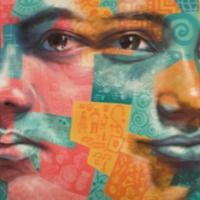
G
There are an estimated 518,000 people living in modern slavery in Egypt, 465,000 in Sudan and an estimated 451,000 in Eritrea (GSI 2018). Since 2006 tens of thousands of Eritreans fleeing widespread human rights abuses and destitution have ended up in Egypt’s Sinai Peninsula. Until 2010, they passed through Sinai voluntarily and generally without any problems and crossed in to Israel. However, since then, Sudanese traffickers have kidnapped Eritreans in eastern Sudan and sold them to Egyptian traffickers in Sinai who have subjected at least hundreds to violence in order to extort large sums of money from their relatives. G ran away from Eritrea in 2012, hoping to find refuge in Sudan. However, while crossing the border she was kidnapped, locked up and held for ransom in Egypt. Subjected to beatings daily and raped a number of times. G was held for months while her family raised the funds to free her. However, even after being freed, she was left at the Israeli border and imprisoned.
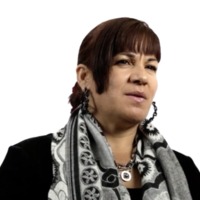
Marisol
There are an estimated 403,000 people living in conditions of modern slavery in the United States (GSI 2018). The US attracts migrants and refugees who are particularly at risk of vulnerability to human trafficking. Trafficking victims often responding to fraudulent offers of employment in the US migrate willingly and are subsequently subjected to conditions of involuntary servitude in industries such as forced labour and commercial sexual exploitation. Marisol Garcia Bejarano spent seventeen years in prison for a crime she did not commit. A survivor of human trafficking she was trafficked from Tijuana to California and was raped and beaten by her trafficker. Marisol witnessed a murder committed by the man who bought her for $200 when she was just thirteen years old. After years of holding her as his domestic servant and sexual slave, he then framed Marisol for his murder, and she went to a California prison for his crime.
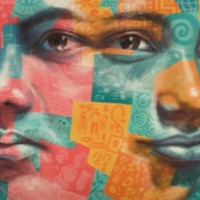
Dinh
There are an estimated 136,000 people living on conditions of modern slavery un the United Kingdom (Global Slavery Index 2018). According to the 2017 annual figures provided by the National Crime Agency, 5, 145 potential victims of modern slavery were referred through the National Referral Mechanism in 2017, of whom 2,454 were female, 2688 were male and 3 were transgender, with 41% of all referrals being children at the time of exploitation. People are subjected to slavery in the UK in the form of domestic servitude, labour exploitation, organ harvesting and sexual exploitation, with the largest number of potential victims originating from Albania, China, Vietnam and Nigeria. This data however does not consider the unknown numbers of victims that are not reported. Dinh was an orphan and homeless in Vietnam after his parents died in a mining accident. Living on the streets and shining shoes, one day one of Dinh’s customers said she could help him get work in the UK. However, upon arrival he was taken by two men and forced to cook and clean for his traffickers for 5 years. Subjected to physical violence and threats, Dinh was also forced to cultivate cannabis plants and was arrested by the police, spending 7 months in prison before he was found not guilty and taken to Hestia.
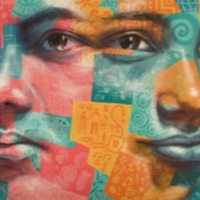
Gracie
It is estimated that there are over 9.2 million people living in conditions of modern slavery across Africa, with 101,000 of these in Central African Republic (GSI 2018). When considering forms of modern slavery, the rate of forced marriage (4.8 victims per 1000 people) was higher than the rate of forced labour (2.8 victims per 1000 people). Over half of all victims of forced labour were held in debt bondage, with similar proportions of men and women in the region trapped through dept. An estimated 400,000 people in Africa were victims of forced sexual exploitation. Within the region, Eritrea, Burundi, and Central African Republic were the countries with the highest prevalence of modern slavery; however, Nigeria and the Democratic Republic of the Congo had the highest absolute number and accounted for over one-quarter (26.3 percent) of all victims in the region. Gracie was 11 when her family was killed due to political and ethnic tension in Central Africa. A family friend took her to a neighbouring country to live with a woman where she was forced to provide sexual services to men. After two years in this brothel, Gracie was taken by a man called Abasi to London where she was once again forced in to prostitution. Gracie was able to escape after a year of sexual abuse and confinement. Told she should seek asylum Gracie appealed to the immigration office, however her passport had been faked to state she was 22 rather than 15 and she was arrested for document forgery. With the help of the NSPCC and a solicitor, Gracie was able to challenge local child services who stated she was an adult and able to find a safe place to live.
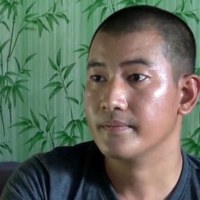
Aung Ko Htway
Within Myanmar, some military personnel, civilian brokers, border guard officials and ethnic armed group continue to recruit or use child solders. In some cases, recruiters use deception, offering incentives or coercing children or their families through false promises about working conditions, salary, and promotion opportunities. While Human Rights Watch have noted that there is no way to precisely estimate the number of children in Burma's army, and while there is an ongoing process to end the forced recruitment of underaged children, there remain numerous accounts proving that the use of child soldiers continues among the 500,000 troops in the country. Aung Ko Htway was abducted when he was a teenager and forced to serve in the Myanmar army for nearly 10 years.
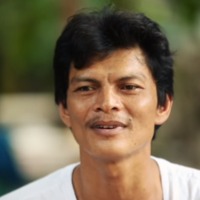
Chairat
Benjina Island lies 400 miles to the north of Australia and has been the home of an illegal fishing operation for a number of years. While only one company was registered to use the island, investigations by labour rights organisations has found that the island acted as a port and base for fishing operations across the region. The island functioned as a makeshift prison, with small cages found where trafficked fisherman would be kept if they clashed with their employers or asked too many questions. It was when the Labour Rights Promotion Network joined forced with the Associate Press and Thai TV Channel 3 after hearing stories from survivors who had escaped the island, mounted a search for the island that they found shocking human rights violations. Chairat was trafficked on to a Thai fishing boat and then found himself imprisoned on Benjina Island where enslaved fisherman were imprisoned, forced to fight and were often killed.